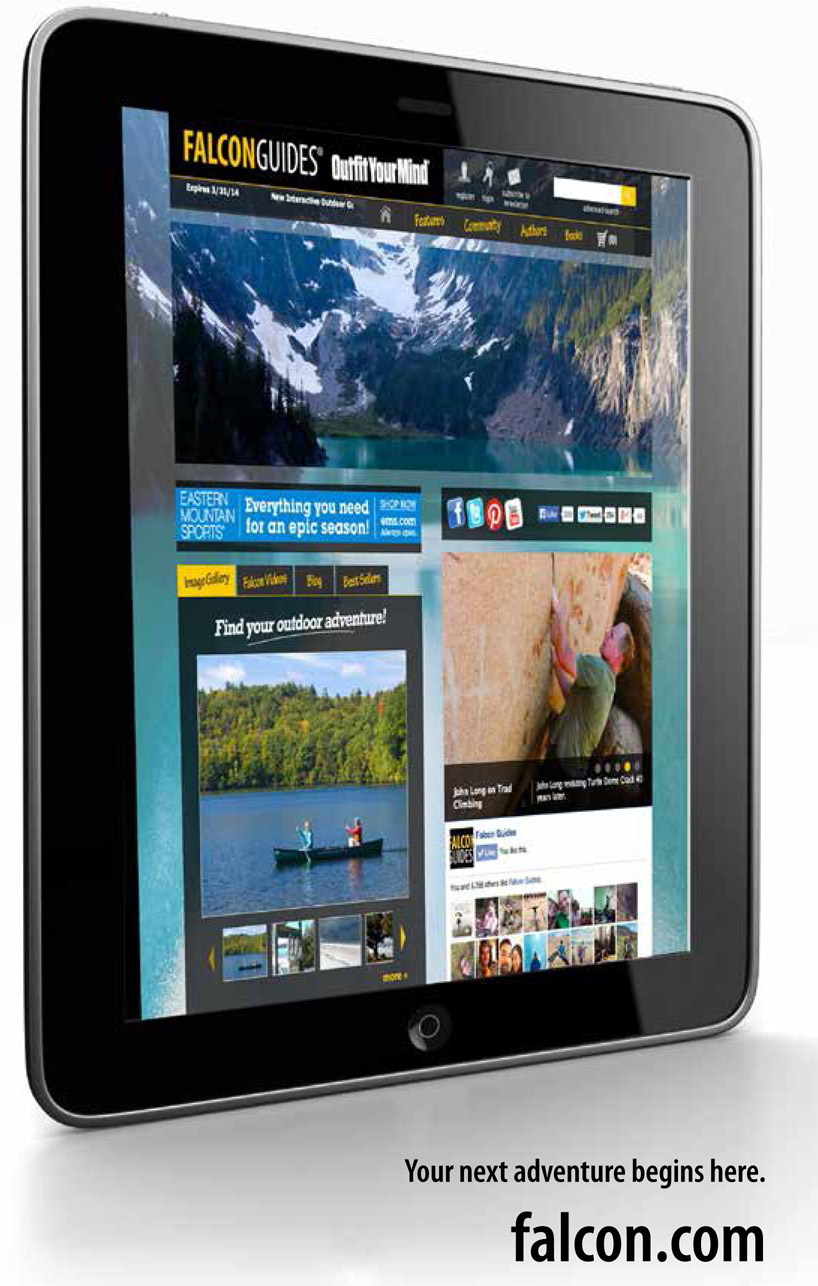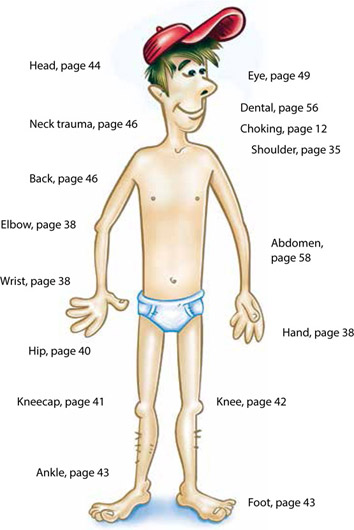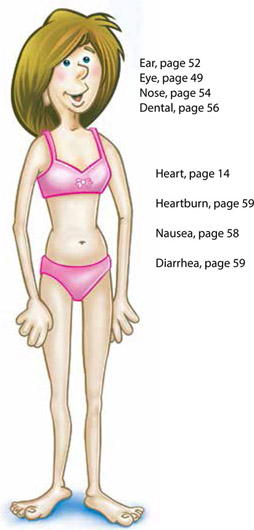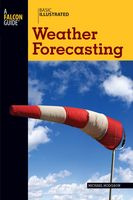
BASIC ILLUSTRATED
Wilderness First Aid
FALCON GUIDES
An imprint of Rowman & Littlefield
Falcon, FalconGuides, and Outfit Your Mind are registered trademarks of Rowman & Littlefield.
Distributed by NATIONAL BOOK NETWORK
Copyright 2016 by Rowman & Littlefield
A previous edition of this book was published by Globe Pequot in 2008.
All rights reserved. No part of this book may be reproduced in any form or by any electronic or mechanical means, including information storage and retrieval systems, without written permission from the publisher, except by a reviewer who may quote passages in a review.
Illustrations by Lon Levin
Photos by William Forgey unless otherwise noted and except the following: pp. 3, 51, and 79 istockphoto; p. 67 Mark Hannaford, expeditionmedicine.co.uk; pp. 17 and 18 courtesy of poison-ivy.org.
British Library Cataloguing in Publication Information Available
Library of Congress Cataloging-in-Publication Data
Forgey, William W., 1942-
Basic illustrated wilderness first aid / William W. Forgey, MD. Second edition.
pages cm
Includes index.
ISBN 978-1-4930-0999-2 (pbk.) ISBN 978-1-4930-1469-9 (e-book) 1. Outdoor medical emergencies. 2. First aid in illness and injury. I. Title.
RC88.9.O95F675 2015
616.02'52dc23
2015015994
 The paper used in this publication meets the minimum requirements of American National Standard for Information SciencesPermanence of Paper for Printed Library Materials, ANSI/NISO Z39.48-1992.
The paper used in this publication meets the minimum requirements of American National Standard for Information SciencesPermanence of Paper for Printed Library Materials, ANSI/NISO Z39.48-1992.
The author and Globe Pequot Press assume no liability for accidents happening to, or injuries sustained by, readers who engage in the activities described in this book. The health information expressed in this book should not be a substitute for professional medical care. The author and publisher urge you to consult with your health care provider for diagnosis or treatment.
Injury Reference Chart

Injury Reference
Bleeding
Blisters
Bone injuries
Burns
Fishhooks
Insects
Snakes
Wounds
Illness Reference Chart

Illness Reference
Altitude
Cold
Heat
Water
Introduction
Virtually every method of handling injury and illness in the wilderness is different from what you would expect in an urban environment. The remoteness from civilization, the lack of readily available medical assistance, and the difficulty of having to handle serious injuries on your ownoften for many hourscan be daunting if you are not prepared. Thus, a book on first aid in the wilderness is much more than a standard first-aid text. It can help ready you to meet the challenges of stabilizing injuries in remote wilderness areas.
While standard first-aid classes can provide a good basic introduction to helping injured individuals, the special techniques described in this book are taught in wilderness first-aid classes. This book follows the latest (2016) Wilderness First Aid Curriculum and Doctrine. If you havent already taken a CPR course, it is also a good idea to do so. Classes can be obtained through your local American Red Cross chapter. Check to see if the Wilderness First Aid course you plan to take follows the Boy Scouts of America (BSA) curriculum. The curriculum can be found at bsa-wfa.com. It is also outlined in Appendix A of this book. All of the content of this book follows the BSA doctrine.
Terms Used in This Book
Throughout this book I have used the terms evacuatego slow or evacuate rapidlygo fast to describe the urgency of evacuation if it is indicated. Appendix B lists specific evacuation guidelines.
For More Information
A further discussion of the techniques of handling wilderness related injuries and illnessparticularly prolonged care when evacuation or rescue may not be an optioncan be found in my book Wilderness Medicine , sixth edition. Another excellent book on the assessment and transport of the patient for evacuation is Wilderness First Responder by Buck Tilton.
CHAPTER 1
Initial Survey
Many years ago it was recognized that responding to an accident should involve a series of well-planned steps. These steps have traditionally been divided into two phases. At various times the first phase has been called primary survey or initial survey; most recently the BSA WFA Task Force has decided the term should be initial assessment. The second phase has been called the secondary survey and is now referred to as the focused assessment.
These changes in terms serve a specific purpose: to emphasize the importance of activities that go beyond the patient to evaluating and managing risk to others, providing leadership to a group that might be involved in the emergency, and assisting in evacuating the patient as well as providing immediate life-saving care and appropriately managing the patient afterward until safely returned to civilization and, if necessary, professional medical care.
Secure the Scene
On reaching an accident victim, the first duty in an urban environment is to activate the emergency medical services by calling 911. Afterward the initial care consists of an urgent, simultaneous attempt to examine the patient and correct life-threatening injuries relating to breathing, heartbeat, and blood loss, while at the same time protecting the victim from a possible spine injury.
In the wilderness, however, before assessing the patient, you must assess the scene! Make sure that it is safe and that falling rock, floods, or other dangers will not hurt you or others. If the area is dangerous, you will have to immediately remove the patient to a safer location and keep other persons away from the scene to prevent them from getting hurt. Accidents tend to multiply! Some dangers are difficult to see or might be delayed in onset. For example, while treating a sprained knee, dont fail to notice if other members of your party are becoming cold from inactivity and thus at risk for hypothermia.
BSIEstablish body substance isolation. This is a rule to protect ourselves from possible infection from a patient by putting on non-latex gloves and eye protection.

Determine the MOIthe mechanism of injury. It is important for me as a doctor to know when you sprained your ankle if it happened when you stepped into a hole or if you stepped onto a rock. Reporting the MOI enables the rescuers or medical professionals to guess the extent of the injury. Falling from 1 foot or 10 feet is a big difference.
The first step in an emergency is to control the scene; the next is to control the patient. By this I mean to prevent her from hurting herself further. We comfort the patient and gather information (such as the patients name), all while we are performing the life-saving initial assessmentthe initial assessment ABCDE method (see Appendix A, Lesson I).





 The paper used in this publication meets the minimum requirements of American National Standard for Information SciencesPermanence of Paper for Printed Library Materials, ANSI/NISO Z39.48-1992.
The paper used in this publication meets the minimum requirements of American National Standard for Information SciencesPermanence of Paper for Printed Library Materials, ANSI/NISO Z39.48-1992.

